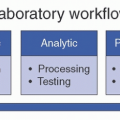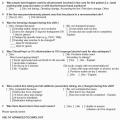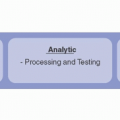Each year in the United States, there are ˜53 000 000 outpatient surgical procedures and 46 000 000 inpatient surgical procedures.
1 For example, there were over 6.9 million upper gastrointestinal (GI), 11.5 million lower GI, and 228 000 biliary endoscopies performed in 2009.
2 Each of these procedures involves contact by a medical device or surgical instrument with a patient’s sterile tissue, mucous membranes, or nonintact skin. A major risk in all such procedures is the introduction of pathogenic microbes, which can lead to infection. Failure to properly disinfect or sterilize equipment may lead to transmission via contaminated medical and surgical devices (eg, carbapenem-resistant
Enterobacteriaceae [CRE]).
3,4Multiple studies in many countries have documented lack of compliance with established guidelines for disinfection and sterilization.
5 Failure to comply with evidence-based guidelines has led to numerous outbreaks and patient exposures.
6 In fact, nearly all infections and patient exposures associated with reprocessing medical or surgical instruments involve high-level disinfection (HLD) of reusable semicritical items.
6,7,8 Due to noncompliance with recommended reprocessing procedures, the U.S. Centers for Disease Control and Prevention (CDC) and the U.S. Food and Drug Administration (FDA) issued a health advisory alerting healthcare providers and facilities (including outpatient care facilities such as specialty clinics, ambulatory surgery centers) about the public health need to properly maintain, clean, disinfect, and sterilize reusable medical devices in September 2015.
9 In this updated version of a previous chapter on this subject,
10,11,12,13,14 we will examine reprocessing of semicritical items (eg, endoscopes, endocavitary probes) and critical items (eg, surgical instruments).
RATIONAL APPROACH TO DISINFECTION AND STERILIZATION
About 50 years ago, Earle H. Spaulding
15 devised a rational approach to disinfection and sterilization of patient-care items or equipment. This classification scheme is so clear and logical that it has been retained, refined, and successfully used by infection control professionals and others when planning methods for disinfection or sterilization.
12,13,14,15,16,17,18,19,20,21 Spaulding believed that the nature of disinfection could be understood more readily if instruments and items for patient care were divided into three categories based on the degree of risk of infection involved in the use of the items. Although the scheme remains valid, there are some examples of disinfection studies with viruses, mycobacteria, protozoa, and prions as well as disinfectants that challenge the current definitions and expectations of high- and low-level disinfection.
22 The three categories Spaulding described were critical, semicritical, and noncritical.
Critical Items
Critical items are so called because of the high risk of infection if such an item is contaminated with any microorganism, including bacterial spores. Thus, it is critical that objects that enter sterile tissue or the vascular system be sterile because any microbial contamination could result in disease transmission. This category includes surgical
instruments, cardiac and urinary catheters, implants, arthroscopes, laparoscopes, and ultrasound probes used in sterile body cavities. Most of the items in this category should be purchased as sterile or be sterilized by steam sterilization if possible. If heat sensitive, the object may be treated with ethylene oxide (ETO), hydrogen peroxide gas plasma, vaporized hydrogen peroxide vapor, or hydrogen peroxide vapor plus ozone or by liquid chemical sterilants if other methods are unsuitable.
Tables 40-1,
40-2,
40-3 summarize sterilization processes and liquid chemical sterilants and the advantages and disadvantages of each. Sterilization technologies can be relied upon to produce sterility only if cleaning, to eliminate organic and inorganic material as well as microbial load, precedes treatment.
25,26,27,28,29,30 Other issues that sterile reprocessing and operating room professionals must deal with when reprocessing instruments include weight limits for instrument trays, wet packs, packaging, loaned instruments, cleaning monitoring, and water quality.
27,31,32
Semicritical Items
Semicritical items are those that come in contact with intact mucous membranes or nonintact skin. Respiratory therapy and anesthesia equipment, some endoscopes, laryngoscope blades and handles,
11,33 esophageal manometry probes, endocavitary probes, nasopharyngoscopes, prostate biopsy probes,
34 infrared coagulation (IRC) device,
35 anorectal manometry catheters, cystoscopes, ultrasound probes used on nonintact skin or mucous membranes (use probe cover when available), and diaphragm fitting rings are included in this category.
11,12 These medical devices should be free of all microorganisms, although small numbers
of bacterial spores may be present. Intact mucous membranes, such as those of the lungs or the GI tract, generally are resistant to infection by common bacterial spores but susceptible to other organisms such as bacteria, mycobacteria, and viruses. Semicritical items minimally require HLD using chemical disinfectants. Glutaraldehyde, hydrogen peroxide, ortho-phthalaldehyde (OPA), peracetic acid, hypochlorite (via superoxidized water) and peracetic acid with hydrogen peroxide are cleared by the FDA
24 and are dependable high-level disinfectants provided the factors influencing germicidal procedures are met (
Tables 40-1 and
40-2). When a disinfectant is selected for use with certain patient-care items, the chemical compatibility after extended use with the items to be disinfected also must be considered.
The complete elimination of all microorganisms in or on an instrument with the exception of small numbers of bacterial spores is the traditional definition of HLD. FDA’s definition of HLD is a sterilant used for a shorter contact time to achieve at least a 6-log10 kill of an appropriate Mycobacterium species. Cleaning followed by HLD should eliminate all pathogens capable of causing infection.
Semicritical items should be rinsed with sterile water after HLD to prevent their contamination with organisms that may be present in tap water, such as nontuberculous mycobacteria (NTM),
Legionella, or Gram-negative bacilli such as
Pseudomonas.
36 In circumstances where rinsing with sterile water rinse is not feasible, a tap water or filtered water (0.2 µm filter) rinse should be followed by an alcohol rinse and forced-air drying.
14,37,38 Forced-air drying markedly reduces bacterial contamination of stored endoscopes, most likely by removing the wet environment favorable for bacterial growth.
37 After rinsing, items should be dried and stored (eg, packaged or hung) in a manner that protects them from recontamination.
Some items that may come in contact with nonintact skin for a brief period (ie, hydrotherapy tanks, ultrasound probes on intact skin [includes central line puncture site]) are usually considered noncritical surfaces and are disinfected with low- or intermediate-level disinfectants.
14,39 Since hydrotherapy tanks have been associated with spread of infection, some facilities have chosen to disinfect them with recommended levels of chlorine.
14,39
Noncritical Items
Noncritical items are those that come in contact with intact skin but not mucous membranes. Intact skin acts as an effective barrier to most microorganisms; therefore, the sterility of items coming in contact with intact skin is “not critical.” Examples of noncritical items are bedpans, blood pressure cuffs, crutches, bed rails, bedside tables, patient furniture, toys,
40 portable equipment (eg, wheel chairs, infusion pumps, pulse oximeters, medication carts)
41,42 and floors.
43,44 In contrast to critical and some semicritical items, most noncritical reusable items may be decontaminated where they are used and do not need to be transported to a central processing area. There is virtually no documented risk of transmitting infectious agents to patients via noncritical items
45 when they are used as noncritical items and
do not contact nonintact skin and/or mucous membranes. However, these items (eg, bedside tables, bed rails) could potentially contribute to secondary transmission by contaminating hands or gloves of healthcare personnel (HCP) or by contact with medical equipment that will subsequently come in contact with patients.
46 Evidence-based practices for disinfection of noncritical environmental surfaces and equipment in healthcare facilities using a bundle approach are available.
47
HIGH-LEVEL DISINFECTION OF SEMICRITICAL ITEMS
Semicritical items are those that come in contact with mucous membranes or nonintact skin. Respiratory therapy and anesthesia equipment, GI endoscopes, bronchoscopes, laryngoscopes, transesophageal echocardiogram (TEE) probes, tonometers, endocavitary probes, transrectal ultrasound-guided (TRUS) prostate biopsy probes,
34 cystoscopes, hysteroscopes, IRC devices and diaphragm fitting rings are included in this category.
12 These medical devices should be free of all microorganisms (ie, mycobacteria, fungi, viruses, bacteria), although small numbers of bacterial spores may be present. Intact mucous membranes, such as those of the lungs or the GI tract, generally are resistant to infection by common bacterial spores but susceptible to other organisms such as bacteria, mycobacteria, and viruses. Semicritical items minimally require HLD using chemical disinfectants. Glutaraldehyde, hydrogen peroxide, OPA, peracetic acid, and peracetic acid with hydrogen peroxide, and a chlorine-based system are cleared by the FDA
24 and are dependable high-level disinfectants provided the factors influencing germicidal procedures are met.
Table 40-2 lists the FDA-cleared high-level disinfectants and chemical sterilants with the advantages and disadvantages of each. The exposure time for most high-level disinfectants varies from 8 to 45 minutes at 20°C-25°C.
24 As with all medications and devices, users must be familiar with the manufacturer’s instructions for use (IFU). When a disinfectant is selected for use with certain patient-care items, the chemical compatibility after extended use with the items to be disinfected also must be considered. Disinfection strategies for some semicritical items (eg, applanation tonometers, rectal/vaginal probes) are highly variable.
48Since semicritical equipment has been associated with reprocessing errors that result in patient lookback and patient notifications, it is essential that control measures be instituted to prevent patient exposures.
6,49 Before new equipment (especially semicritical equipment as the margin of safety is less than that for sterilization)
50 is used for patient care on more than one patient, reprocessing procedures for that equipment should be developed. The FDA requests that the device manufacturer include at least one validated cleaning and disinfection/sterilization protocol in the labeling for their device. HCP should receive training on the safe use and reprocessing of the equipment and be competency tested. At the University of North Carolina (UNC) Hospitals, to ensure patient-safe instruments, all HCP that reprocess semicritical instruments (eg, instruments that contact a mucous membrane such as vaginal probes, endoscopes, prostate probes) are required to attend a 3-hour class on HLD of semicritical instruments initially and an 1-hour refresher class annually. The 3-hour class includes the rationale for and importance of HLD and discussion of high-level disinfectants and exposure times, reprocessing steps, monitoring minimum effective concentration, personal protective equipment, and the reprocessing environment (eg, establish “dirty-to-clean” flow). Infection prevention rounds or audits should be conducted at least annually in all clinical areas that reprocess critical and semicritical devices to ensure adherence to the reprocessing guidelines, manufacturers’ IFU and institutional policies. This includes reprocessing critical and semicritical medical and surgical instruments in outpatient care facilities as many patient exposures and infections have occurred in this setting.
51 Results of infection prevention rounds should be provided to the unit managers, and deficiencies in reprocessing should be corrected and the corrective measures documented to infection prevention within 30 days. Patient safety issues such as the wrong contact time, temperature, or concentration of high-level disinfectant require immediate correction and follow-up.
6,49Semicritical items that will have contact with mucous membranes of the GI tract or upper respiratory tract should be rinsed with sterile water or filtered water or tap water followed by an alcohol rinse.
14,38 An alcohol rinse and forcedair drying markedly reduces the likelihood of contamination of the instrument (eg, endoscope), most likely by removing the wet environment favorable for bacterial growth.
37 After rinsing, items should be dried and stored (eg, packaged or hung) in a manner that protects them from damage or contamination. Drying also retards biofilm formation.
30,52 Using an automated drying and storage cabinet, a recent paper demonstrated that internal channels were dry at 1 hour and external surfaces at 3 hours. With the standard storage cabinet, there was residual internal fluid at 24 hours, whereas external surfaces were dry at 24 hours.
53 There is no recommendation to use sterile or filtered water rather than tap water for rinsing semicritical equipment that will have contact with the mucous membranes of the rectum (eg, rectal probes, anoscope) or vagina (eg, vaginal probes).
14Semicritical items represent the greatest risk of disease transmission as far more healthcare-associated infections have been caused by reusable semicritical items than critical or noncritical items.
11,12 There is virtually no documented risk of transmitting infectious agents to patients via noncritical items
45 when they are used as noncritical items and do not contact nonintact skin and/or mucous membranes. Similarly, critical items are rarely
30,54 associated with disease transmission. In contrast, semicritical items (eg, GI endoscopes) have been associated with more than 150 outbreaks (
Table 40-4).







